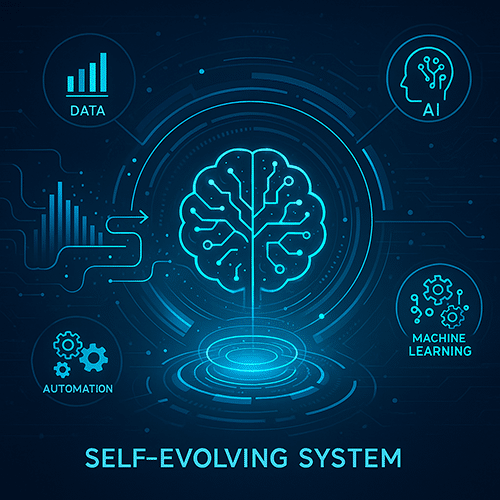Stop Building Tools. Start Building Systems That Think, Learn, and Grow
Stop Building Tools. Start Building Systems That Think, Learn, and Grow
For years, digital transformation was synonymous with “tool adoption.” New apps, platforms, and software flooded the enterprise world—each solving a specific pain point. But in today’s complex business environment, tools alone aren’t enough.
What we need now isn’t more tools.
**We need intelligent systems—**systems that think, learn, and grow with the business.
🔄 From Toolkits to Thinking Systems
Tools are reactive.
Systems are proactive.
Tools follow instructions.
Systems make decisions.
Tools automate tasks.
Systems optimize outcomes.
In 2025 and beyond, businesses need to move from a tool-centric mindset to a systems-first approach—where data, AI, and automation work in sync to drive continuous improvement.
🤖 What Is a Thinking System?
A thinking system isn’t just software. It’s an interconnected ecosystem that:
- Analyzes data in real time
- Learns from patterns and behaviors
- Makes predictions and recommendations
- Adapts processes automatically
- Integrates seamlessly with other platforms
Think of it as a living, evolving digital brain embedded in your operations.
🧠 Why You Should Stop Building Tools
1. Tools create silos
Each tool solves one problem. When used in isolation, they create fragmented experiences and disconnected data.
2. Tools require constant manual input
They depend on human action to function. There’s limited intelligence or adaptability built in.
3. Tools can’t scale thinking
They don’t learn from outcomes or optimize themselves based on performance.
✅ What Systems That Think, Learn, and Grow Look Like
Here’s what intelligent, adaptive systems can do:
| Capability | Legacy Tools | Intelligent Systems |
| Decision-Making | Manual | AI-powered |
| Scaling | Linear | Exponential |
| Data Use | Static | Dynamic, Real-Time |
| User Interaction | Reactive | Predictive |
| Optimization | Requires human oversight | Self-learning and evolving |
⚙️ Examples of Intelligent Systems in Action
- HR: A platform that learns employee behavior and recommends tailored engagement plans
- Sales: A CRM that predicts churn risk and nudges reps with next-best actions
- Operations: A workflow engine that automatically reroutes tasks based on workload
- Customer Experience: A support system that learns from past interactions to personalize solutions in real time
🚀 How to Start Building Thinking Systems
- Unify your data – Systems are only as smart as the data they consume
- Adopt AI-first architecture – Build with intelligence embedded, not added later
- Automate iteratively – Start small and allow your system to learn and evolve
- Measure outcomes, not activity – Focus on value, not usage metrics
- Choose platforms, not point tools – Think ecosystems, not isolated apps
🧭 Final Thought
Tools may get the job done. But systems create the future.
The organizations that win tomorrow are not those that use the most tools—they’re the ones that build systems that get smarter every day, systems that adapt, evolve, and grow with the business.
So next time you think about investing in another tool—
ask yourself: Is this a tool, or is this part of a system that thinks?




